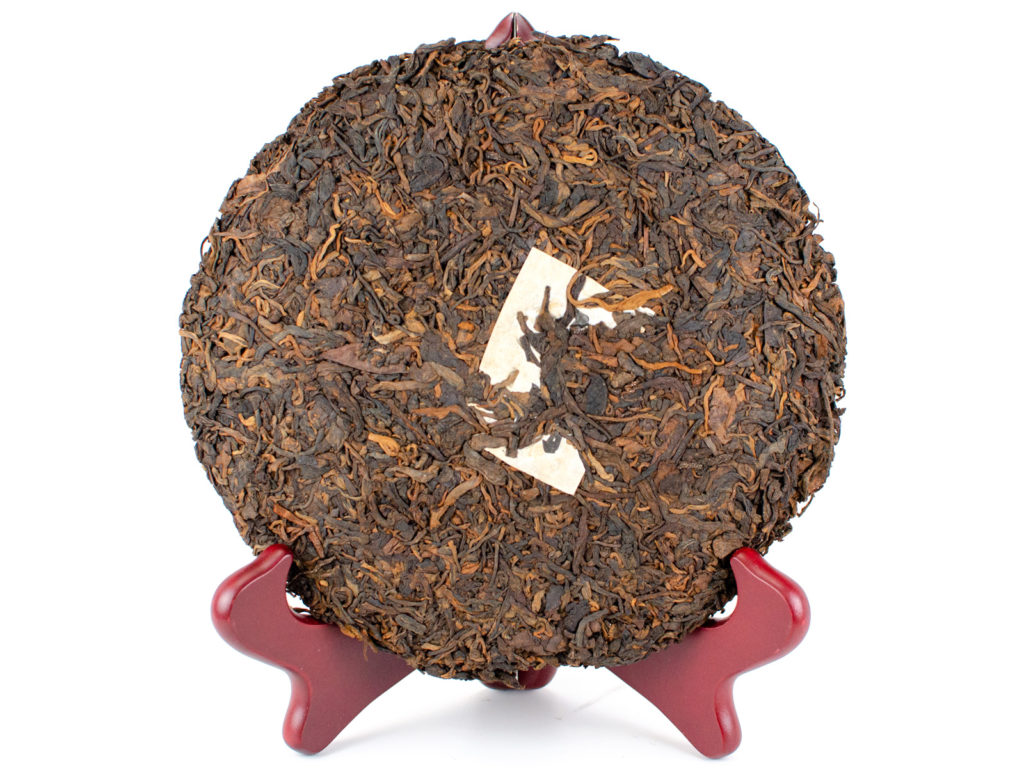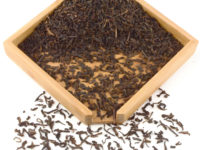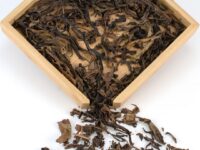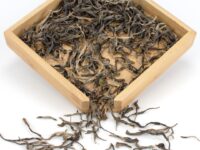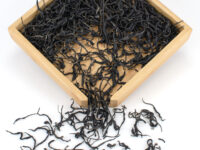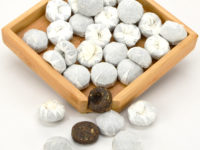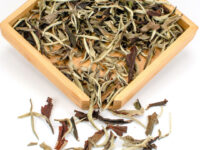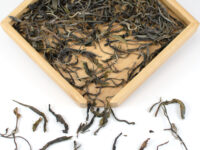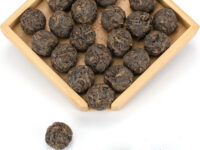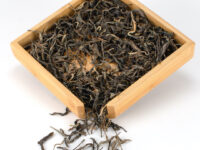History of puer tea
The most famous tea from Yunnan is Puer. Yunnan also produces green tea, jasmine tea, and black tea. Yunnan province is in south west China and the origin of tea can be traced there. There are a number of trees in Yunnan that can be dated back more that 2000 years. The rain forests of Yunnan are rich in diversity, a majority of the flowers that we grow in the US can be traced back to Yunnan.
The origin of the name puer
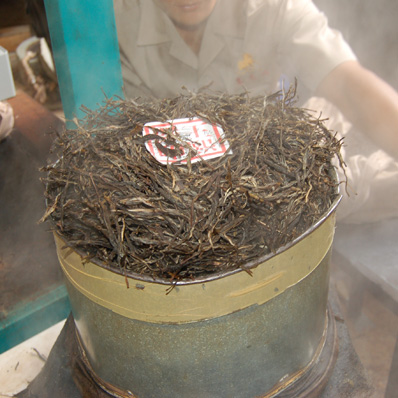
Yunnan began to process tea in the Three Kingdoms period (220-360). Allegedly, at this time Zhu Ge Liang from Sichuan, a clever tactician, encouraged the Yunnan people to cultivate tea to improve their lives. Still, Yunnan people call Zhu Ge Liang their tea god. He is still prayed to in the south of Yunnan where he conquered more that 2000 years ago. This is the area of Xichuanbanna and the six famous mountains. At the heart of Yunnan’s south west is the city of Puer, the base of the province’s ancient tea market, and from where “puer tea” derives its name. (The city Simao in 2007 changed its name to Puer, and should not be confused with the ancient city). From Puer city, tea was distributed to Tibet, and South East Asia on “tea horse trading roads.” The rough terrain of Yunnan demanded efficiently packed tea, so compressed cakes of tea were wrapped and tied into stacks of seven and enclosed into a bamboo shell. For this reason, certain puer cakes are commonly labelled “Qi Zi Bing” or literally Seven Piece Cake. Carrying tea though the humid rain forest over the long, hard trading routes may have encouraged natural fermentation.
People collect puer tea for three main reasons, which include enjoyment of the tea, overall health benefits and the investment potential. It became popular outside of the traditional markets of Tibet and Mongolia, where for many years it was exchanged for horses, when it became sought after in Hong Kong for its health benefits, and for its mysterious quality of slow, natural fermentation, that causes it to improve with age. During the Cultural Revolution a lot of the old cakes were destroyed increasing the rareness of aged puer. In 1973, a process was invented to create fermented puer in about 60 days.
Camellia sinensis assamica and puer tea
Now the popularity of puer has spread from Hong Kong and Guangzhou, to Taiwan, Beijing, Shanghai and South East Asia. The popularity of puer has even started to spread to the US and Europe. All puer tea starts out the same. The basic ingredient is called mao cha. Mao cha is harvested and allowed to dry in the sun. Yunnan is the only tea growing province in China that has a lot of high altitude sunshine and blue skies. One of the side affects of all this sunshine is some very large leaf tea plants.
All tea originated in Yunnan, but you might be surprised to know that the tea plants are called Camellia sinensis assamica. The reason is that when the British found the variety of tea growing in India they named it Assamica and believed that it was wild, but it had actually been planted along the old Silk Road that ran from Yunnan and Burma into Assam. Even though the origin issue has been cleared up, the ancient tea trees in Yunnan have kept the inaccurate name.
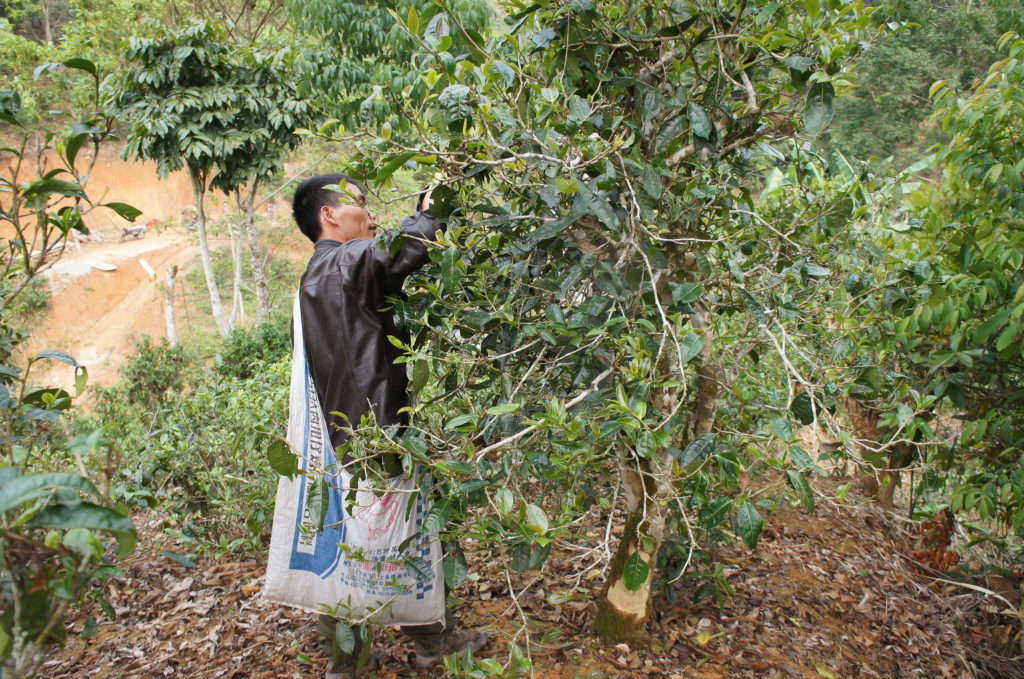
The myth of the wild tea trees
A lot of puer produced is said to be made from wild tea trees, but this is not the case. Wild tea trees are known to make people pretty sick sometimes, and what is called “wild” by puer makers is in fact old tea trees that have been cultivated, and are usually over a hundred years old. The age of the tree can be determined by measuring the trunk. Trees have very often been cut back drastically to increase yield, and more bushes are being planted at break neck speed. Planting tea is helpful to the the environment in Yunnan that has suffered from the burning of forests to plant sugar cane. Sugar, though a profitable short term crop, quickly depletes the mountain soil and erosion can quickly wear away the topsoil from whole mountain sides.
Harvesting and making puer tea
The quality of the mao cha the most important factor in making puer. The ideal mao cha is two leaves and one bud. Farmers typically bring their mao cha to towns and villages where it is purchased by local buyers and sorted and then purchased by puer producers. Although relatively large areas may be favorite places for certain producers to buy their mao cha, the cultivation is done by small farmers. Since puer has become more popular, many farmers are cutting their old trees to create bushes which have a better yield, so the number of old trees is decreasing every year. Most commercial puer is a blend of mao cha from different areas and there are some producers that will reveal the areas in Yunnan where the mao cha originated. These kinds of details enhance the value of the tea over time, and we try to supply this information whenever we can. The tea grows in high mountain areas and the mao cha is brought now to the villages in the valley once a week to be sold. The process hasn’t changed for centuries.
Distinguishing between shu (black, cooked) puer and sheng (green, raw) puer

There are two general types of puer: Shu (black, cooked) and Sheng (green, raw). The raw or sheng (green) puer is made from mao cha this is lightly steamed and pressed into cakes. It is the sheng puer that demonstrates the miracle of puer, slowly changing over time through a natural fermentation process until it becomes “cooked.” The microbes present in the mao cha that are not destroyed during sun drying work their magic and over 8 to 10 years until raw puer tea is transformed to cooked, green to black. It is the sheng that is most valuable over time and starts to reach is full maturity after around thirty years.
Puer teas are elemental and mysteriously dark, fermented teas which are robust, earthy, rich and grounding. Puer is often a favorite tea of the truly dedicated tea drinker. This aged tea usually begins with a variety of leaf from exceptionally broad-leaved tea trees. This tea either left loose or compressed into cakes is then permitted to retain barely enough moisture content that the tea continues to ferment slowly over time. For this reason, puer is best stored open so that oxygen can continue to refine the tea.
The modern age of shu puer
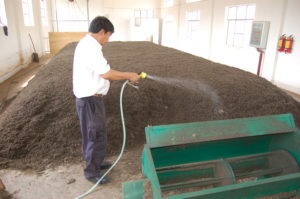
Shu puer, or cooked/black puer is more complicated. In 1973, because of a shortage of old cakes caused by the destruction of all things old during the Cultural Revolution, a process was developed for uniformly speeding up the aging process. This process has been well guarded in the past but is relatively simple, but not without skill. Large piles of maocha are wetted and then covered with a large canvass cloth, creating a kind of composting effect. The water drains off as does some of the natural moisture through the weight of the pile. Inside of the pile heat is produced. The pile becomes a rich environment for microbes that thrive in the tea leaves of the Yunnan rain forest. The tea master’s skill comes into play when the pile needs to be turned. The turning needs to come at the right time, and there are clumps of growth that occur at the bottom of the heap and must be broken up and evenly distributed throughout the pile. When to turn and the attention paid to the details of turning are critical, so that the pile adds a pleasant fragrance to the tea. A poor level of skill turns the heap into an unkempt barnyard smell, flatteringly called ‘earthy’ in the West, and ‘old house smell’ in China. After the the tea is cooked it is sorted for grade, and then lightly steeped and pressed into cakes, bricks, etc.
Leaf size determines puer grading
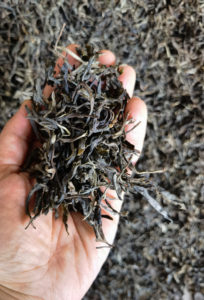
Puer is separated into ten grades determined by leaf size, with the largest being tenth grade. In understanding about grades, it is wrong to assume that the 1st grade is the best grade for puer. There is only an incidental correlation between the grade of the puer and the quality of an individual cake. For example, some of the most sought after tea is made from maocha that is larger than tenth grade tea. It is always a question of taste. Of course if a lot of expensive buds are used in a cake, it will drive the price up, even if it is not considered a good candidate for aging. So don’t be strictly guided by the grade, think also about the uniformity and tightness of compression and the overall flavor achieved by the cake’s mao cha blend.
It used to be that the old government factories blended by just throwing maocha from the surrounding mountains all in together in a kind of random way. Now there are some companies that blend for a mixture of qualities that are associated with different growing areas for creating a well rounded cake, taking sweet maocha, and blending with fragrant maocha for example. There are also rumors about starters for cooking, like bread starters, and maocha that comes from some mythical place. Puer companies try to keep a tight lid on these trade secrets, and all of this secrecy has given puer a mythical reputation. However puer is magical in and of itself, without all of the hyperbole. It is a simple tea made by ancient peoples from ancient trees and bushes that has remarkable qualities.
Puer is famed for its health benefits and is consumed daily in the South of China, and in Southeast Asia by older Asians that are looking to maintain their health. The French are currently doing research on the affects of drinking puer with maintaining a healthy level of cholesterol. It is said to be helpful for digestive and metabolism problems.
Judging a puer cake’s quality
When shopping for puer here are some very general guidelines.
Look the cake over to see if the leaves are uniform through the cake, and pay attention to the compression of the cake; it should not be too tight, or too loose.
Look at the color – for a cooked cake, it should be dark with red overtones; for a green cake the leaves should be dark green with silvery overtones.
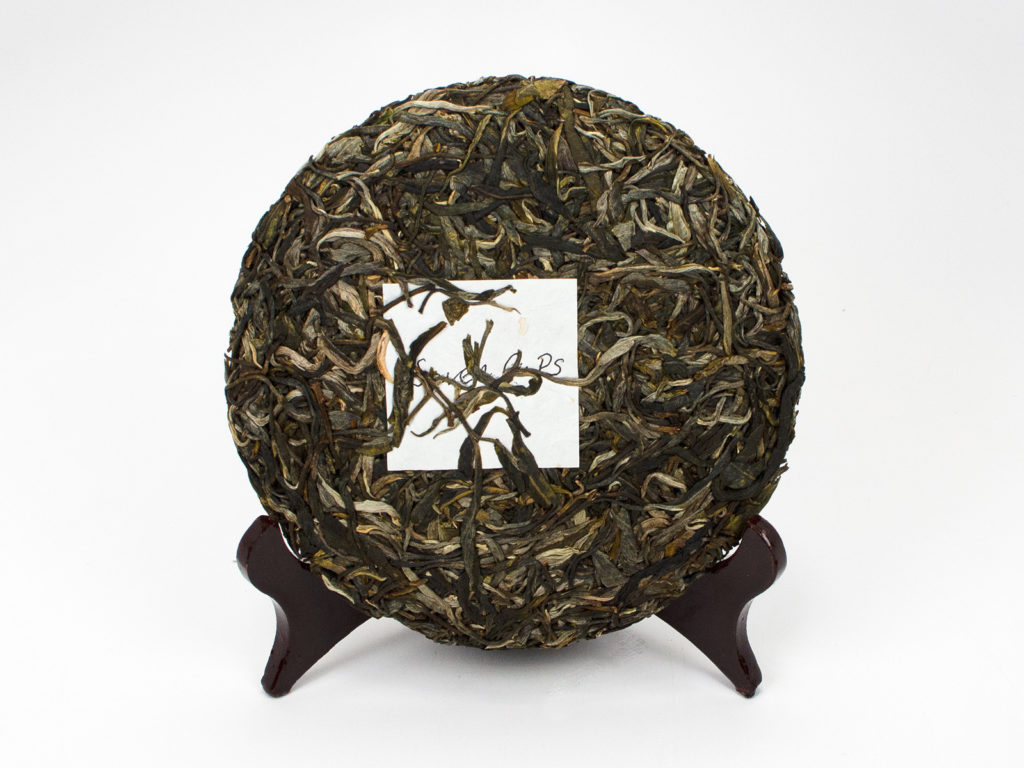
Smell it if you can, and leave it if it smells like fishy or like dirty socks.
Don’t believe out of the ordinary claims, and don’t buy old puer unless you know someone that really knows what they are doing with puer. Remember that tea producers are country people, and like all country people they have a distinct distrust for outsiders, so claims of outsiders from Taiwan or Hong Kong, etc., claiming that their supervision of the country people has made the product more authentic, well, if you know country people you can fill in this thought. Buy from people that you have developed trust over time. There are many honest traders, and they have a long history in the market.
